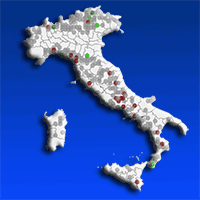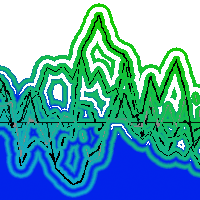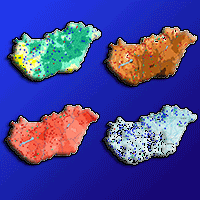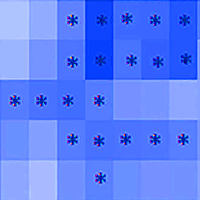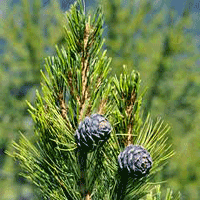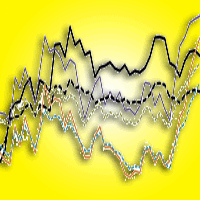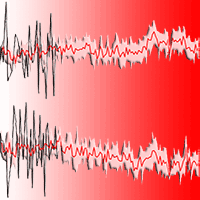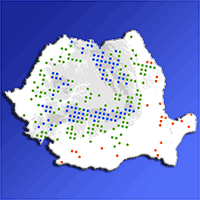
Influence of climate on tree health evaluated by defoliation in the ICP level I network (Romania)
Ionel Popa (1), Ovidiu Badea (1-2), Diana Silaghi (1)
iForest - Biogeosciences and Forestry, Volume 10, Issue 3, Pages 554-560 (2017)
doi: https://doi.org/10.3832/ifor2202-009
Published: May 05, 2017 - Copyright © 2017 SISEF
Research Articles
Abstract
Defoliation is the main parameter for assessing tree crown conditions, and is the result of cumulative interactions among different types of stressors, including climate, air pollution, pests and diseases, and management systems. Here, we evaluated a long-term data series (1992-2013) provided by the ICP-Forests Level I monitoring network (16 × 16 km) in Romania. Specifically, we investigated how climate influences defoliation at different spatial and temporal levels using statistical analyses. Using periodic climatic data (mean temperature and precipitation) derived from a daily grid dataset (ROCADA) with a resolution of 0.1 × 0.1° (10 × 10 km), we quantified how climatic parameters were correlated with defoliation, which was expressed as the mean tree defoliation per plot (DEF), and the proportion of damaged trees (crown defoliation > 25% - fDEF). The cross-correlation (Spearman r) between defoliation indicators and temperature was positive and relatively constant over time for all broadleaves and conifers, combined and separately, except for Fagus sylvatica (European beech), which had a negative cross-correlation coefficient. The correlation obtained for precipitation was similar to that obtained for temperature; however, this relationship was negative (except, again, for beech). The temporal influence of temperature on defoliation was much lower than that of precipitation, which had the greatest influence in dry regions (south and southeast Romania), especially for Quercus species. Furthermore, precipitation had a positive influence in moderate climate regions for conifers that were situated outside their natural distribution ranges. For beech and conifers situated at the upper altitudinal limits, temperature was negatively correlated with defoliation, i.e., temperature had a positive influence on health status.
Keywords
Climate Change, Defoliation, Tree Species, Forest Health, Temperature, Precipitation, Level I
Authors’ Info
Authors’ address
Ovidiu Badea
Diana Silaghi
National Institute for Research and Development in Forestry “Marin Dracea” (INCDS), Eroilor 128, 077190 Voluntari (Romania)
Transilvania” University of Brasov, Universitatii 1, 500068 Brasov (Romania)
Corresponding author
Paper Info
Citation
Popa I, Badea O, Silaghi D (2017). Influence of climate on tree health evaluated by defoliation in the ICP level I network (Romania). iForest 10: 554-560. - doi: 10.3832/ifor2202-009
Academic Editor
Silvano Fares
Paper history
Received: Aug 18, 2016
Accepted: Mar 29, 2017
First online: May 05, 2017
Publication Date: Jun 30, 2017
Publication Time: 1.23 months
Copyright Information
© SISEF - The Italian Society of Silviculture and Forest Ecology 2017
Open Access
This article is distributed under the terms of the Creative Commons Attribution-Non Commercial 4.0 International (https://creativecommons.org/licenses/by-nc/4.0/), which permits unrestricted use, distribution, and reproduction in any medium, provided you give appropriate credit to the original author(s) and the source, provide a link to the Creative Commons license, and indicate if changes were made.
Web Metrics
Breakdown by View Type
Article Usage
Total Article Views: 49589
(from publication date up to now)
Breakdown by View Type
HTML Page Views: 41077
Abstract Page Views: 3673
PDF Downloads: 3640
Citation/Reference Downloads: 26
XML Downloads: 1173
Web Metrics
Days since publication: 3167
Overall contacts: 49589
Avg. contacts per week: 109.61
Citation Metrics
Article Citations
Article citations are based on data periodically collected from the Clarivate Web of Science web site
(last update: Mar 2025)
Total number of cites (since 2017): 15
Average cites per year: 1.67
Publication Metrics
by Dimensions ©
Articles citing this article
List of the papers citing this article based on CrossRef Cited-by.
References
Forest monitoring sistem in Romania - Dynamics of Romanian forest health status over the period 1990-2002. Analele ICAS 46: 221-228.
Gscholar
Forest monitoring - assessment, analysis and warning system for forest ecosystem status. Notulae Botanicae Horti Agrobotanici Cluj-Napoca 41 (2): 613-625.
Gscholar
The convention on biological diversity’s 2010 target. Science 307 (5707): 212-213.
CrossRef | Gscholar
Visual assessment of crown condition. Manual Part II. In: “Manual on Methods and Criteria for Harmonized Sampling, Assessment, Monitoring and Analysis of the Effects of Air Pollution on Forests”. UNECE-ICP Forests Programme Co-ordinating Centre, Hamburg, Germany, pp. 61.
Gscholar
Visual assessment of crown condition and damaging agents. Manual Part IV. In: “Manual on Methods and Criteria for Harmonized Sampling, Assessment, Monitoring and Analysis of the Effects of Air Pollution on Forests”. UNECE-ICP Forests Programme Co-ordinating Centre, Hamburg, Germany, pp. 49.
Gscholar
Plot-scale modelling to detect size, extent, and correlates of changes in tree defoliation in French high forests. Forest Ecology and Management 311: 56-69.
CrossRef | Gscholar
The condition of forests in Europe: 2012 Executive Report. ICP Forests, Hamburg, Germany, pp. 24.
Online | Gscholar
Climate change 2013: the physical science basis. Contribution of Working Group I to the Fifth Assessment Report of the Intergovernmental Panel on Climate Change. Cambridge University Press, Cambridge, UK and New York, NY, USA, pp. 1535.
Gscholar
Beiträge zur Lehre von den Durchforstungen, Schlagstellungen und Lichtungshieben [Contributions to thinnings, order of cutting and light felling]. Klindworth’s, Hannover, Germany, pp 147. [in German]
Gscholar
Ecosystems and human well-being (vol. 5). Millenium Ecosystem Assessment, Island Press, Washington, DC, USA, pp. 155.
Gscholar
Estimating the environmentally compatible bioenergy potential from agriculture. European Environmental Agency, Copenhagen, Denmark, pp. 138.
Gscholar

